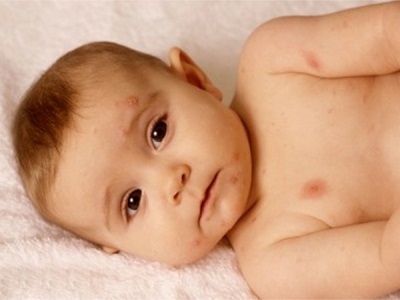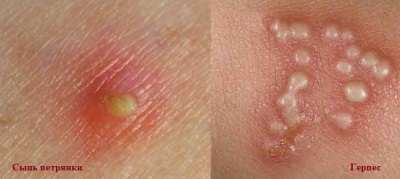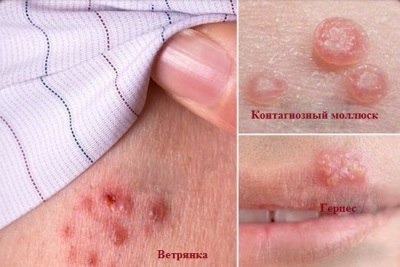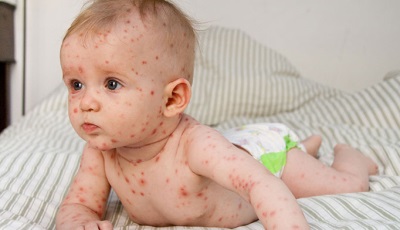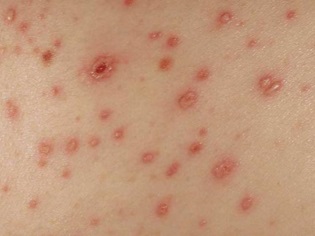Varicella-zoster virus and its differences from the herpes virus and enterovirus infection
Chicken pox is called a highly contagious and common childhood infection. To understand how such a disease is transmitted and how it differs from other viral diseases, each mother should learn more about the chickenpox pathogen. What kind of virus is it, what is its resistance to the environment, and does it have to do with herpes viruses?
Chickenpox and herpes virus - the same or not
The cause of chickenpox in both children and adults is a virus called Varicella Zoster. Due to the fact that in adulthood, such a virus causes a disease that is called herpes zoster, there is some confusion. In fact, the occurrence of herpes on the lips or genitals is caused by a completely different virus. It is called Herpes simplex or herpes simplex virus, which is of two types - 1 and 2. At the same time, the Varicella Zoster virus is a herpes virus of type 3.
However, all these viruses can be called "relatives", since both the herpes simplex virus and the Varicella Zoster virus are representatives of a large family of herpes viruses.
It turns out that herpes on the lips or on the genitals causes a virus similar to chickenpox in its structure, but it is a completely different pathogen.
Herpes simplex viruses and the chickenpox pathogen have a lot in common:
- They are DNA-containing viruses, in the structure of which emit a core and capsid (envelope consisting of a capsomer).
- The Herpes simplex virus enters the human body in the same way as the pathogen of chickenpox - mainly airborne and contact.
- Getting into the body of a vulnerable person, all herpes viruses attack mucous membranes and skin, and then penetrate into the nervous tissue, remaining in the body for many years.
- Antiviral drugs that are effective against Herpes simplex, and inhibit the virus Varicella Zoster, therefore, are used for severe chickenpox.
- Both types of viruses can affect the formation of the fetus, causing serious pathology and miscarriage.
With regard to the distinctive features of the pathogen of chickenpox, then, despite one family, the varicella-zoster virus and herpes zoster provokes an acute infection, leaving behind a lasting immunity. At the same time, the infection caused by Herpes simplex is chronic, and immunity to this virus is not formed.
How much lives in the human body and beyond
Penetrating into the body of a child once, the pathogen of chickenpox remains in the human body for life. It resides in the nervous tissue in an inactive state and in 10–20% of adults older than 45 provokes shingles.
At the same time, the resistance of the Varicella Zoster virus outside the human body is very low. Its destruction in the air and in the room contribute to the rays of the sun, temperature changes, disinfectant solutions. Because of this, in the open air, the pathogen of chickenpox can last only up to 10-15 minutes. That is why the cases of transmission of such infection through third parties and objects are practically not found.
At the same time, the varicella zoster virus differs in its rather high volatility - from sick a person with particles of mucus, he can fly tens of meters. For this reason, residents of the same apartment building or children in one kindergarten, even from different groups, can become infected with chickenpox.
If the sick child is in the same room with healthy ones, it takes only 5-10 minutes to transmit the virus to susceptible children, especially those with weakened immunity.
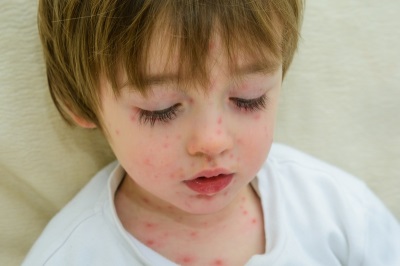
How to distinguish chickenpox from enterovirus infection
Most viral infections begin equally with fever and other symptoms of indisposition. Therefore, to distinguish them from each other at first is quite difficult.
In addition, an enterovirus infection has such similarities with chickenpox:
- The most common children are 3-10 years old.
- Infants in the first 6 months are protected by their mother's antibodies.
- The pathogen enters through the mouth and upper respiratory tract.
- The body temperature of the sick child rises.
- Children have weakness, headaches, drowsiness, vomiting.
- May damage the mucous membrane of the eyes.
- There are congenital forms, if the mother became infected during pregnancy.
- Cure such infections are mostly at home, and are hospitalized for complications.
- Children at the time of illness are isolated.
The main differences between the causative agents of these infections and the course of diseases are presented in the table:
Chickenpox | Enterovirus infection |
Caused by a herpes virus group DNA virus. | Called RNA-containing viruses - polioviruses, Coxsackie viruses and ECHO viruses. |
The virus quickly dies during disinfection and is only 10-15 minutes outside the human body. | Viruses stand firm with ordinary disinfectants and can remain outside the body for a long time. |
The disease is transmitted mainly by airborne droplets. | In addition to airborne transmission, there is also an enteric-oral route and transmission through water. |
The source of the disease is only a child with chickenpox. | Pathogens can also be transmitted from healthy people (virus carriers). |
Incubation period on average is 14 days (can last from 7 to 21 days). | The average duration of the incubation period is 2-5 days (can last from 1 to 10 days). |
The most characteristic clinical manifestations are blister rash and high body temperature. | The clinic of such an infection is often non-specific and is represented by fever, as well as inflammation of the upper respiratory tract. Some children may have a pink spotted-papular rash that lasts for several days and disappears without a trace. |
In most children, the infection is mild. | Mark a large number of erased forms. |
A postponed infection forms a strong immunity (repeatedly sick very rarely). | Immunity after the disease is serospecific (only to the type of virus that caused the infection). |
There is a vaccine that is widely used to protect against chickenpox around the world. | Vaccines do not exist, since pathogens are represented by a variety of serotypes. |
For more information on chickenpox and herpes, see Dr. Komarovsky’s program.
For the differences between chickenpox and herpes Zoster, which is expressed in the form of rashes along the intercostal nerves, see the program "Live is Great"

